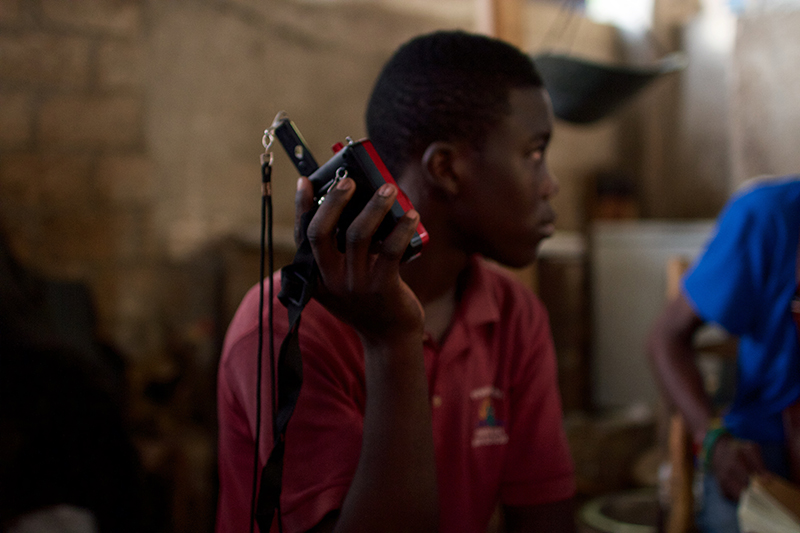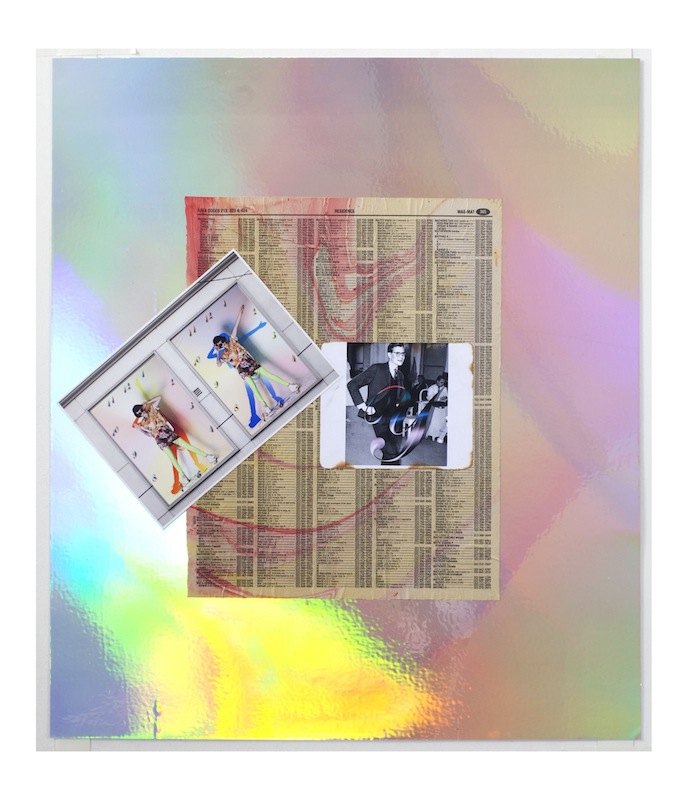
© » KADIST
Chia-Wei Hsu
Stones and Elephants by Chia-Wei Hsu derives from the Malay literary classic The Hikayat Abdullah . The author Abdullah bin Abdul Kadir, who once served as the secretary of Major General William Farquhar, chronicled his life in Malaysia and published his writings in 1849. Hsu’s video installation excerpts two chap- ters from this classic.

© » KADIST
Ayoung Kim
In 2019, Ayoung Kim traveled to Mongolia to research its widespread animistic belief system towards land, mother rock, stones, and sacred caves that purify human guilt. The Mongolian people’s belief that rocks and minerals are alive, like other natural elements, consider the particular origin myth that human beings were born from stones. For the video work Petrogenesis, Petra Genetrix Kim creates her own hyperbolic mythology connected to the origin of the fictional mineral genderless Petra Genetrix, a figure who also appears in other recent works by the artist.

© » KADIST
Andrew Norman Wilson
In Andrew Norman Wilson’s work Kodak the artist uses computer-generated imagery to create narratives that question the reliability of images in the age of post-production. The artist creates disturbances in typical notions of time and space to highlight the existential terror of humans trying to make sense of their memories and perception in the 21st century. On its surface, Kodak questions how improvements in digital imagery have affected the analog film industry, but it also showcases the consequences for how humans relate to their memories.

© » KADIST
Beatriz Santiago Muñoz
Marché Salomon by Beatriz Santiago Muñoz depicts two meat vendors, a young man and woman, chatting in Marché Salomon, a busy Port-au-Prince market. Amongst the surrounding bustle, the two have an unsentimental discussion about the mystical qualities of common products sold at the market, wondering whether the divine can inhabit any kind of object—mass produced bottles, toxic rivers, beheaded goats. Their musings weave together the cosmic and the mundane, with the work of butchering a goat and the characters of the market serving as existential metaphors for the universe, time travel, ghosts, and death.

© » KADIST
Jiri Kovanda
This ephemeral installation by Jirí Kovanda, documented in the same way as his performances with a photograph and a text, belongs to a body of works that took place in his apartment/studio. During an interview with Hans Ulrich Obrist, the artist highlighted that he had never had a studio and that this work space blended with his apartment. A piece of string cuts across the room in a diagonal; it functions as a scale to measure time and space.

© » KADIST
Carter Mull
Mull’s Worker’s Clock collage works bring together images from the artist’s studio photography practice, found photographs, and pages from a phone book, laying them over a psychedelic warp of color in the background. One of the images is borrowed from a billboard, Double Block (for Alanna Pearl, Nik Nova and R. Mutt) (2013) that Mull created to hang above some storefronts in downtown Los Angeles. The pair of photographs features a woman posed in the center for rings of numbers, her body and shadow taking the place of the mechanical hands.

© » KADIST
Leslie Shows
Human Quarry is a large work on paper by Leslie Shows made of a combination of acrylic paint and collage. Both through its title and formally—through how the shapes in the composition resemble a mountain or natural formation—the piece relays us to a mineral quarry or a deep mining pit where materials are extracted. Interspersed among the block-like figures and rocky textures, we also see several human silhouettes, either cut-out, or as if they were whited out by a shining light, or lost in the shadows.

© » KADIST
Will Rogan
Will Rogan’s video Eraser (2014) shows a hearse parked in a clearing amidst leaf barren trees. The steely grey sky stands in stark contrast to the vehicle’s luminously pristine white finish and makes this already deathly object seem even more ghostly. The grass underneath is half-turned brown and further marks this as a lifeless landscape.
Will Rogan
- location: Albany, California
- year born: 1975
- gender: male
- nationality: American
Ayoung Kim
Ayoung Kim is interested in notions of crossings, transmissions, transnationals, trans-positions and reversibility...
Jiri Kovanda
- location: Praha, Ceská Republika
- year born: 1953
- gender: male
- nationality: Czech
Leslie Shows
- location: San Francisco, California
- year born: 1977
- gender: female
- nationality: American
Andrew Norman Wilson
Andrew Norman Wilson is an artist, curator, and filmmaker whose practice is mostly based in research and documentary...
Carter Mull
Los Angeles-based artist Carter Mull is an obsessive sort, and his fascinations show through in his multimedia photographic and installation-based works...
Chia-Wei Hsu
Embarking from myriad audio-visual narratives, Chia-Wei Hsu pursues imaginative interrogations of cultural contact and colonization in Asia, oftentimes amalgamating his primary narratives with non-human actors including technologies, animals, gods, environments, traditions, and material objects...
-
1970-1979
Jiri Kovanda
1979This ephemeral installation by Jirí Kovanda, documented in the same way as his performances with a photograph and a text, belongs to a body of works that took place in his apartment/studio...
-
2010-2019
Carter Mull
2013Mull’s Worker’s Clock collage works bring together images from the artist’s studio photography practice, found photographs, and pages from a phone book, laying them over a psychedelic warp of color in the background...
Will Rogan
2014Will Rogan’s video Eraser (2014) shows a hearse parked in a clearing amidst leaf barren trees...
Beatriz Santiago Muñoz
2015Marché Salomon by Beatriz Santiago Muñoz depicts two meat vendors, a young man and woman, chatting in Marché Salomon, a busy Port-au-Prince market...
Chia-Wei Hsu
2019Stones and Elephants by Chia-Wei Hsu derives from the Malay literary classic The Hikayat Abdullah ...
Ayoung Kim
2019In 2019, Ayoung Kim traveled to Mongolia to research its widespread animistic belief system towards land, mother rock, stones, and sacred caves that purify human guilt...
Andrew Norman Wilson
2019In Andrew Norman Wilson’s work Kodak the artist uses computer-generated imagery to create narratives that question the reliability of images in the age of post-production...



